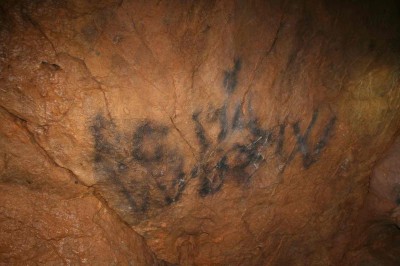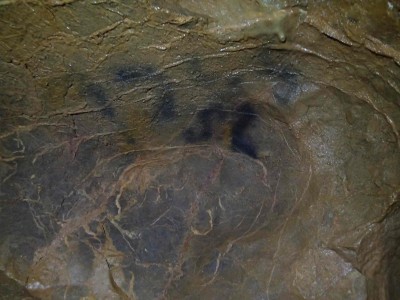6th September 2015: A personal account of today’s trip.
Underground with Nick Hawkes and Paul Brock. We were joined later by Claire Cohen and Matt Clarke, while Chris Batstone was at the top of the pitch waiting to de-rig.
Cleared the debris from last week’s ‘little effort’ with Nick and Paul dragging the rocks [and gloop] up into the sizeable chamber at the end of the crawl. The chemical persuasion had the desired effect and there is still some fractured rock to remove although some of that will need splitting. Another strategically placed effort might well reveal what lies ahead after clearing. Marvellous stuff!
At the surface we enjoyed the sunshine with Tony, Caroline and Alice drinking tea and eating cake before retiring to the Queen Vic for more refreshment.












 Fiddington is a village about 9 miles west of Bridgwater off the Minehead road. At the church in the village is found a Sheila-na-gig. The only other site in Somerset where these carvings are recorded is at Wells Cathedral, where there are two on roof bosses in the west cloister. They are more commonly found in Ireland and it has been suggested there are links to Celtic Christian influences. The Sheila-na-gig is located at the south-east corner of the nave wall about 2.8 metres above ground level. It is carved into a sandstone block and is thought to be 11th-12th C.
Fiddington is a village about 9 miles west of Bridgwater off the Minehead road. At the church in the village is found a Sheila-na-gig. The only other site in Somerset where these carvings are recorded is at Wells Cathedral, where there are two on roof bosses in the west cloister. They are more commonly found in Ireland and it has been suggested there are links to Celtic Christian influences. The Sheila-na-gig is located at the south-east corner of the nave wall about 2.8 metres above ground level. It is carved into a sandstone block and is thought to be 11th-12th C.  The description below is from the entry listed at
The description below is from the entry listed at 